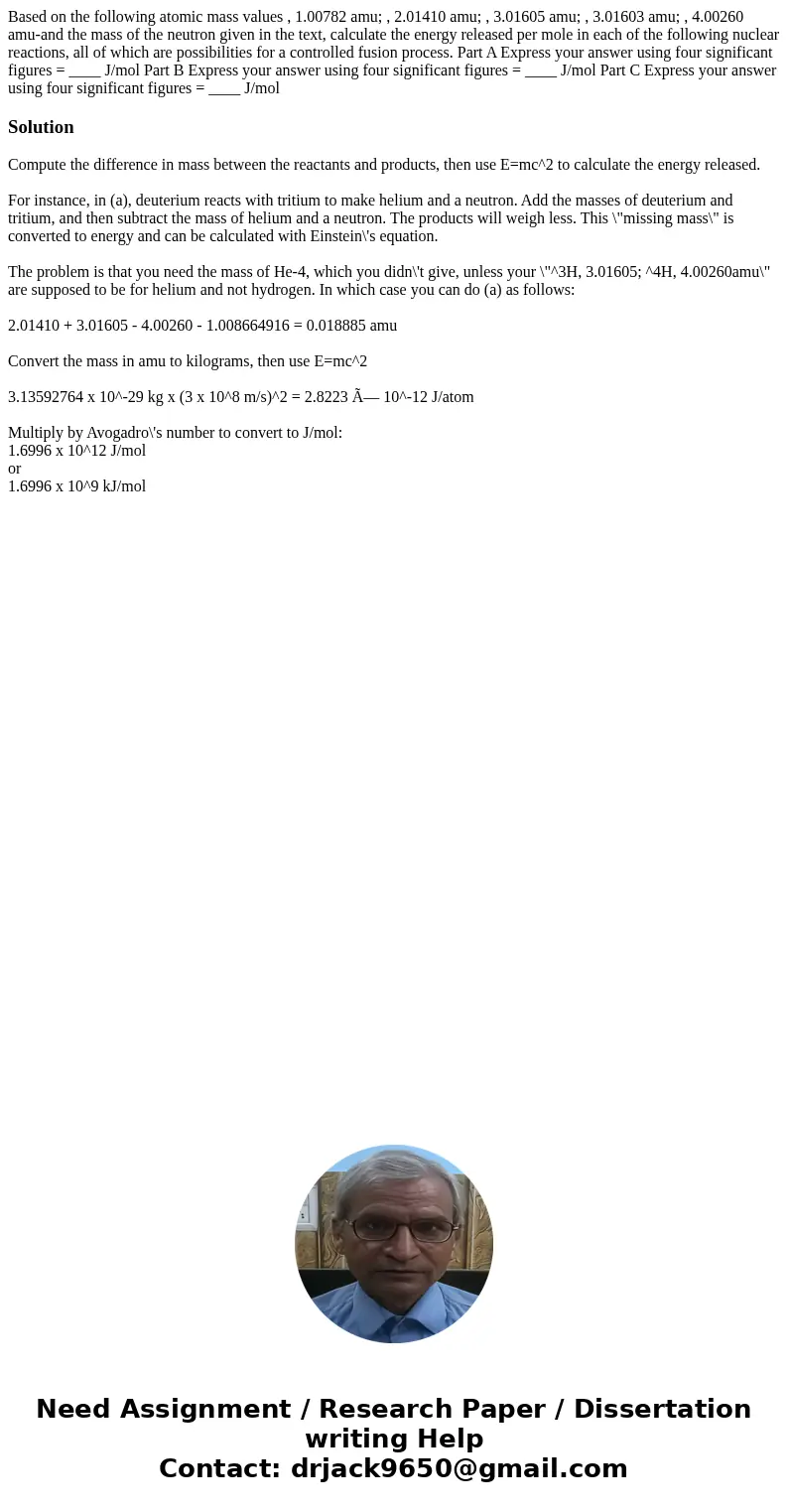Based on the following atomic mass values 100782 amu 20141
Solution
Compute the difference in mass between the reactants and products, then use E=mc^2 to calculate the energy released.
For instance, in (a), deuterium reacts with tritium to make helium and a neutron. Add the masses of deuterium and tritium, and then subtract the mass of helium and a neutron. The products will weigh less. This \"missing mass\" is converted to energy and can be calculated with Einstein\'s equation.
The problem is that you need the mass of He-4, which you didn\'t give, unless your \"^3H, 3.01605; ^4H, 4.00260amu\" are supposed to be for helium and not hydrogen. In which case you can do (a) as follows:
2.01410 + 3.01605 - 4.00260 - 1.008664916 = 0.018885 amu
Convert the mass in amu to kilograms, then use E=mc^2
3.13592764 x 10^-29 kg x (3 x 10^8 m/s)^2 = 2.8223 × 10^-12 J/atom
Multiply by Avogadro\'s number to convert to J/mol:
1.6996 x 10^12 J/mol
or
1.6996 x 10^9 kJ/mol

 Homework Sourse
Homework Sourse